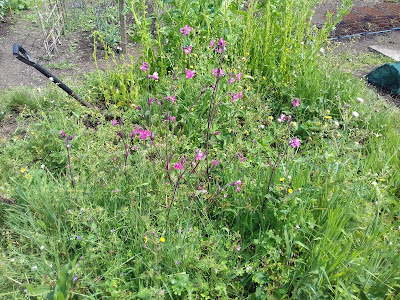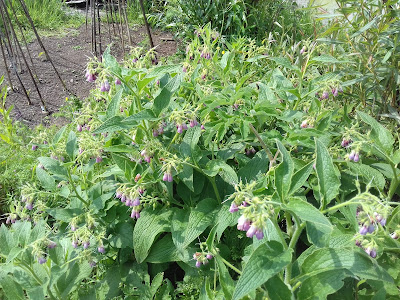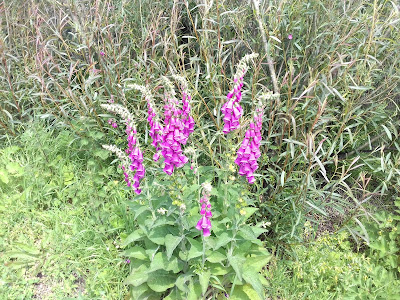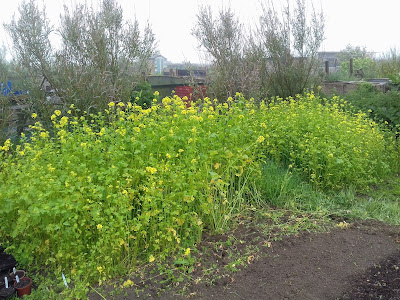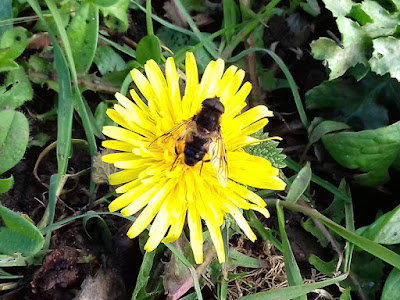 |
| Bees On The Allotment |
Much has been said and written in recent years about the importance of bees for growers -
and the possible decline of these wonderful creatures.
I have nothing to add to that - or to the seemingly endless recent goings on about "climate change" and "war on plastic". I just focus on the practicalities (not politics!) of growing lovely vegetables and flowers. Also the sheer joy of it.
The importance of bees on the allotment is fairly obvious - they pollinate my plants and so help to produce more fruits and flowers. They are also rather beautiful.
So they are worth encouraging - and a simple way to do this is to include an area (or areas) for flowers on the allotment plot.
On mine I have a small(ish) area reserved for wildflowers on one side. Over the last couple of years I've sown some Wildflower seeds and planted out a few Sunflowers. I've also allowed some weeds to grow - although some of these need a bit of control as they can take over and "bully out" the other plants.
Next to that I've also planted a small patch of Comfrey. This has a double benefit - as well as the flowers attracting bees the plants can be harvested for compost and liquid fertiliser.
I also allow the margins of my plot to grow naturally - just the few inches along each fence. Some wildflowers seed themselves naturally here, such as the beautiful Wild Foxgloves in the photo above.
Green Manures can also add to all of this - especially those that flower in Spring / Summer such as the Mustard on my plot above.
So - a few simple steps to encourage bees onto my plot, add some beauty and improve my crops - good all round!
